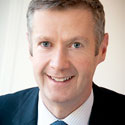02:45 PM
Accurate Timestamps for Electronic Trading Are a Must
I recently read Simon Sinek's book Start With Why. In the opening chapter, he gives a great illustration of how we often draw false conclusions that are confidently held, with data that is incomplete or inaccurate.
- On a cold January day, a forty-three-year-old man was sworn in as the chief executive of his country. By his side stood his predecessor, a famous general who, fifteen years earlier, had commanded his nation's armed forces in a war that resulted in the defeat of Germany. The young leader was raised in the Roman Catholic faith. He spent the next five hours watching parades in his honor and stayed up celebrating until three o'clock in the morning.
Who am I describing?
Most people reading this article would conclude the person in question is John F. Kennedy, but you would be wrong. What if I provided a critical piece of metadata?
The date in question is Jan. 30, 1933.
John F. Kennedy was sworn in as the 35th president of the United States on Jan. 20, 1961. The person described above is actually Adolf Hitler.
This is an important illustration of how adding an appropriately granular and accurate record of the event time relative to the question in hand leads to a completely different conclusion of who did what and what actually happened. Without this critical piece of data, we tend to make conclusions based on what we think we know and what we expect the answer to be. This is very dangerous when people's reputations and businesses are on the line.
On Wall Street, a debate has emerged with the SEC on the need to collect multi-party electronic trading data and to provide sufficiently accurate timestamps. At the heart of this debate is the question of what is sufficiently accurate. Is it seconds, milliseconds, microseconds, or nanoseconds?
To answer this question, we must understand how the collected data will be used and what questions will be asked from the data. If we assume that the primary question to be answered by the SEC's proposed Consolidated Audit Trail proposals is "What exactly happened, and who caused it?," then one has to examine the quality and sufficiency of the data to answer that.
A number of important concepts need to be discussed and understood. First is the requirement to determine the correct sequence of events accurately. If two causal events (A and B) occur, you need to be able to answer this question: Did A cause B, or did B cause A? To determine the sequence of events with sufficient accuracy, one has to determine the time at which each event occurred. The event that happened first can be concluded to be the root cause of the event sequence. The order of events can be determined by creating the event sequence timeline, which requires a simple ordering of the time for all events.
The key determinant for the accuracy of the event time is the frequency of the events of interest. In our case, the fundamental events of interest are executed trade orders. In the US equities markets, the response times for orders placed on public exchanges are of the order of 100 us. The response time for other events, such as the time from a market tick update to an order being placed, is an order of magnitude less (i.e., less than 10 us). The accuracy of time therefore needs to be at least better than the minimum period between events of interest (i.e., 10 us). In fact, this is not sufficient to replicate the event sequence accurately. If we apply the principles from Nyquist sampling theory, we can reproduce with sufficient fidelity (confidence) the event sequence. Nyquist tells us that we need to sample at twice the frequency of the maximum event frequency. Therefore, we need to have a timestamp accuracy of at least 5 us to answer the above questions for all events that happen on US equity markets. This is not a matter of opinion. It is simply the math.
Donal Byrne is the CEO of Corvil, the leading real-time analytics company for monitoring and safeguarding the performance of the world's electronic trading networks. As CEO of Corvil, Donal has been at the forefront of technology innovation and its application to financial ... View Full Bio


















